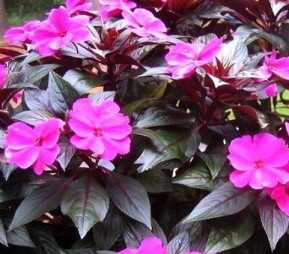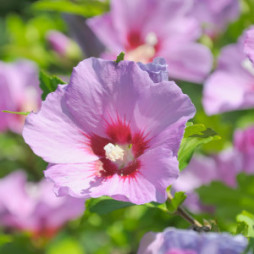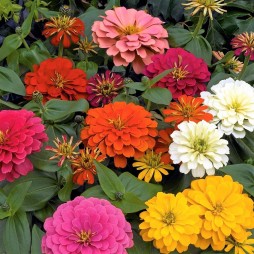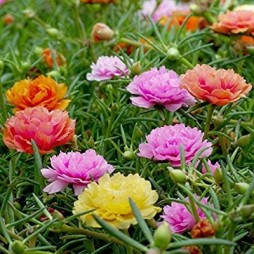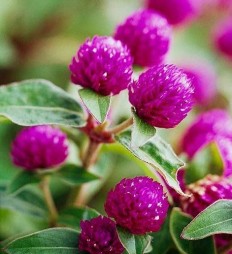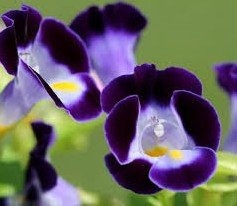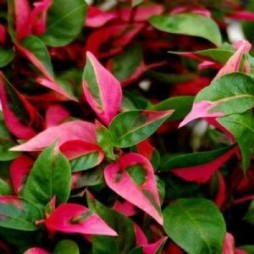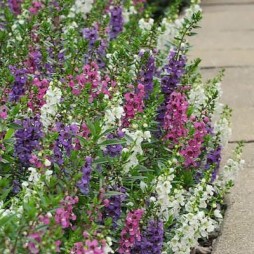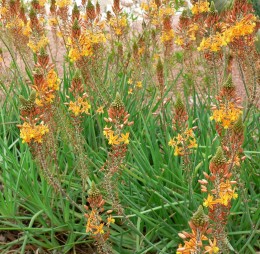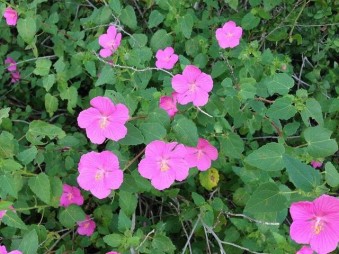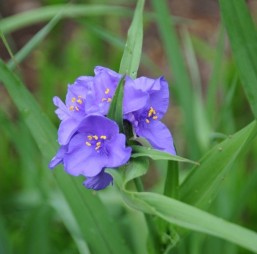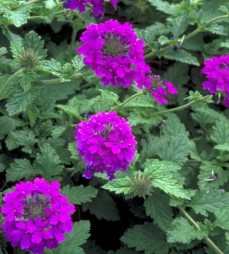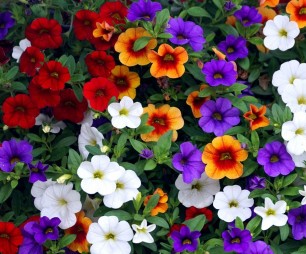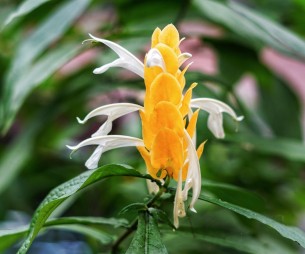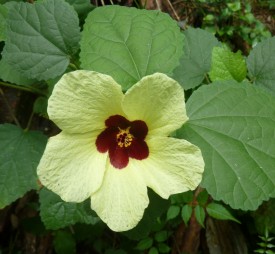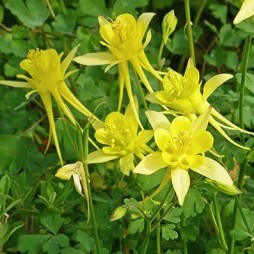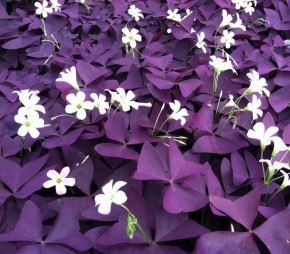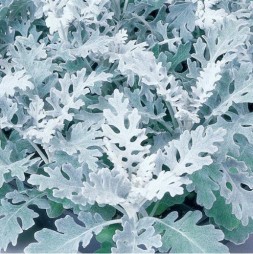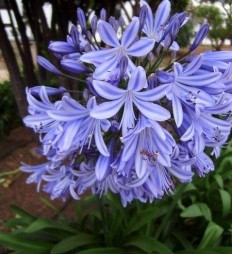Product Catalog
Description
The gem-like flowers and foliage of New Guinea impatiens will transform shady spots in your landscape into a festival of color. These super-easy annual flowers, available in a variety of colors, can be used as eye-popping bedding plants or in pots and window boxes. Besides their colorful flowers, many New Guinea impatiens also offer variegated foliage. Like their shade-loving cousins the common impatiens, New Guinea impatiens form small clumps and hold their many flowers above their foliage, where they make a colorful display. Producing a lot of nectar, butterflies and hummingbirds will flock to the flowers for a quick snack.
Rates
Please contact us for current pricing and availability.
Description
For a tropical look with your landscaping, add the beautiful rose of Sharon, also known as Althea. Splashes of white, red, pink, lavender, and blue as well as bi-color paper-like flowers will bloom from late spring into fall, adding wonderful color and texture throughout your flowerbeds and gardens. The large, showy flowers attract birds and butterflies as well as other pollinators. Rose of Sharon is easy to grow, even for beginning gardeners, as they are tolerant of a wide range of conditions, including poor soil, heat, humidity, and drought.
Rates
Please contact us for current pricing and availability.
Description
Considered one of the easiest annuals to grow, zinnias bring an explosion of gorgeous color from early spring until late fall. The blooming may slow down a little at the height of the summer heat but since they grow very quickly and are extremely reliable, they make a wonderful choice for flower beds, pots and containers. Their cheery, bright flowers come in a variety of shapes, sizes and colors such as orange, pink, purple, red, white and yellow. Zinnias, depending on the variety, grown anywhere from 6 inches to 4 feet tall and 1 to 2 feet wide and butterflies, bees and hummingbirds are attracted to their blooms.
Rates
Please contact us for current pricing and availability.
Description
Moss Rose, a succulent flowering plant also known as Portulaca, hails from Argentina, Uruguay and southern Brazil. It is a tough, resilient plant with bright, almost fluorescent blooms ranging from single to fully double and colors from white, cream and yellow to pink, orange and red. Their succulent leaves are a clue to their wonderful drought-tolerance. The trailing habit of the Moss Rose works perfectly for hanging baskets but also serves as wonderful ground cover since it never goes out of its bounds. Since it flourishes in poor soil, it would work well in a rock garden or stacked rock wall where it will delicately cascade down.
Rates
Please contact us for current pricing and availability.
Description
Originating in Central America, purple globe amaranth, also known as bachelor buttons, are a charming, easy-to-grow flower ideal for mixing in garden beds and borders or adding to pots and containers. It is a mounding plant that produces a plethora of small, purple, globe-shaped blooms. The flowers have a papery feel and are excellent for indoor bouquets or dried arrangements. Depending on the variety, purple globe amaranth, grows anywhere from 6 to 24 inches tall. They are also loved by butterflies and bees.
Rates
Please contact us for current pricing and availability.
Description
With the appearance of a blazing fireball and native to Texas and Mexico, the Strawberry Fields Globe Amaranths is a long-blooming, colorful addition to any garden landscaping. The blooms, which resemble strawberries with tiny yellow seeds, rise above the extra-sturdy olive-green stems so that when they open, they wave in the summer sun, intimating a care-free feeling. The Strawberry Fields are easy to grow in a sun-drenched area and a mass planting is a beautiful sight. They are also ideal for fresh-cut or dried bouquets and are attractive to butterflies and bees.
Rates
Please contact us for current pricing and availability.
Description
With a bloom forming a structure that resembles a chicken wishbone, that is how the torenia gets its nickname, the wishbone flower. The torenia, native to Africa and Asia, is a ground-hugging, attention grabbing plant with profuse and delicate blooms. While the flowers may appear to be delicate they are tough and able to withstand the hottest of summer heat when properly located in the landscape. It comes in a variety of multiple, bicolored shades and is a fantastic choice for beds, containers and borders. Butterflies, bees and hummingbirds love this plant.
Rates
Please contact us for current pricing and availability.
Description
Foliage plants such as coleus add a wonderful splash of color without having to worry about blooms but if the size of coleus is too large, then Joseph’s coat or alternanthera may be the perfect option. Available in almost the same range of colors as coleus and just as easy to grow and native to Central and South America, Joseph’s coat also comes in a wide array of sizes with a variety of leaf shapes, some with unique crinkled foliage and others with multicolored leaves. No matter the color or texture, all types of Joseph's coats are easy to grow and work perfectly in beds, containers and borders.
Rates
Please contact us for current pricing and availability.
Description
Gardeners know that when planning beds, pots and containers that it is not just about the flowers. Foliage is an important to the overall beauty of the landscape. And when it comes to foliage, coleus comes in at the top of the list. They have some of the most stunning and amazing colored foliage in combinations of pink, red, orange, burgundy, green and yellow as well as a wide variety of leaf sizes, patterns, color intensity and overall shapes. So no matter where in your landscaping you are looking to put coleus, there is always a place that will be a perfect fit. Add to beds, borders, pots and containers for colorful interest.
Rates
Please contact us for current pricing and availability.
Description
Gerbera daisies are known for their bright and cheerful daisy-like flowers. They originate from South Africa and come in various sizes and colors including pink, yellow, salmon, orange and white, with flower sizes anywhere from 2 to 5 inches across.
Rates
Please contact us for current pricing and availability.
Description
A Texas native perennial with bright green foliage and hot red-orange tubular flowers beloved by hummingbirds and butterflies, Flame acanthus, also known as the hummingbird bush, is a tough and must-have plant for landscape. The blooms will last from the middle of the summer to early winter. Due to its hardiness and adaptability, Flame acanthus is a great option for xeriscaping. It also works well as a border along a sidewalk or driveway as it grows around 3 - 4 feet in height but also works well in pots. The bark is light and flaky and makes an interesting winter and early spring accent.
Rates
Please contact us for current pricing and availability.
Description
Often referred to as summer snap dragons because they produce a profusion of flowers resembling small snapdragons which bloom all summer long as well asinto the fall, Anfgelonias are a perfect addition to summer landscapes. Planting them in masses will make a striking display. They have the appearance of being delicate and difficult to grow but are actually quite easy, especially since they love the sun. Excellent for growing in containers and window boxes, they are also strong performers in beds and along borders. Their beautiful spikes come in a wonderful array of colors from mauve, purple and pink to blue and white and are available in tall, upright and short bushy varieties. Many think their fragrant blooms smell like apples and they make excellent cut flowers
Rates
Please contact us for current pricing and availability.
Description
Native to South America, the graceful, flowering bulbine was relatively unknown in the U.S. until recently. Bulbine flowers make a colorful accent for flower beds, herb gardens or a mixed container with star-shaped blooms in yellow or orange. Growing bulbine is an excellent choice for gardens and landscapes as they are drought tolerant. In fact, these flowers are often found in rock gardens with poor soil just for this reason. They can also bloom throughout the year. The sap of the succulent leaves is used medicinally in the same way as gel of the aloe vera plant, leading to the common name of burn jelly plant.
Rates
Please contact us for current pricing and availability.
Description
The name rock rose acknowledges the resemblance of the flowers to old-fashioned, single roses and the preferred habitat of the plants—rocky, relatively poor soil. A native shrub beloved by pollinators and originating in the Texas rocky woods and banks, the Texas rock rose is carefree and versatile. Its hibiscus-like pink- to rose-colored flowers adorn the shrubby perennial from early summer through fall. It makes wonderful curbside borders and will continue to provide months of easy-care color despite the heat.
Rates
Please contact us for current pricing and availability.
Description
One of the must-haves for the garden is the spiderwort. These interesting flowers not only offer something different to the landscape but are extremely easy to grow and care for. While no one officially knows how it got its name, some people think the plant was named for the way its flowers hang down like spiders. Others believe it comes from its medicinal properties, as it was once used to treat spider bites. The three-petaled spiderwort flowers are usually blue to purple, but may also be pink, white or red. They only remain open for a day while blooming in the morning hours and closing at night. The plant’s foliage consists of arching grass-like leaves that will grow about a foot or two in height, depending on the variety.
Rates
Please contact us for current pricing and availability.
Description
If you are looking for a plant that blooms nonstop from early summer to fall and requires only a minimum of attention, then verbena is the answer. Verbena will provide an endless display of colorful summer flowers when planted in the sunniest and possibly driest area of your landscaping. This family of tender perennials show off finely cut foliage topped by spectacular clusters of purple, red, white, yellow, orange, or bi-colored blooms. The nectar-rich flowers are also prized by butterflies and hummingbirds. Depending on the variety, verbena will grow 12 to 30 inches in either upright or trailing forms. It is a sun-worshipper that makes a magnificent addition to garden beds, window boxes, or hanging baskets.
Rates
Please contact us for current pricing and availability.
Description
Known by numerous names such as Calibrachoa, Million Bells and Mini Petunias, this fairly new species is dazzling and fun plant. The names Million Bells and Mini Petunias comes from the fact that it features hundreds of small, bell-like flowers that resemble miniature petunias. Available in a wide variety of colors form violet, blue, red, magenta, pink, orange, yellow and white, its trailing habit and bountiful flowers makes it perfect for use in hanging baskets, containers or as a small area ground cover. They grow from to 3 to 9 inches tall and will bloom from spring through fall.
Rates
Please contact us for current pricing and availability.
Description
The Shrimp plant is very appropriately named. It is easily recognized by the colorful, drooping, shrimp-like bracts it produces, giving a tropical feel to the garden. This easy-to-grow plant can reach two to six feet tall, and the white flower inside the bracts attracts both hummingbirds and butterflies.
Rates
Please contact us for current pricing and availability.
Description
Native to tropical Asia, the Tropical Rose Mallow produces bright yellow flowers and deeply lobed leaves growing on tall stems which make this plant the perfect accent to any flower garden. Butterflies and birds are attracted to the Rose Mallow plant and it is drought tolerant, making it perfect for dry areas and xeriscaping with minimal watering required. The plant above ground will freeze but unless there is a lengthy, hard freeze, it will come back year after year.
Rates
Please contact us for current pricing and availability.
Description
Native to the canyons of the Southwest, Golden Spur Columbine is one of the most widely adapted of all columbines, which have been grown in gardens for centuries, and are among the most popular of perennials. Hummingbirds will often drop in to sip nectar from the flowers. Golden Spur Columbine features large, bright-yellow flowers over a bushy mound of ferny light-green foliage. A vigorous grower, it combines excellent heat tolerance with a long display of fragrant yellow flowers from spring to late summer. A good rebloomer if promptly deadheaded and makes a great cutting flower.
Rates
Please contact us for current pricing and availability.
Description
Known also as Purple Shamrock, False Shamrock and Love Plant, Oxalis is a dainty and elegant plant with three pretty purple heart shaped leaves, which each have three sides that sit symmetrically to one another at the end of every stem. The overall effect is that they end up looking like a trio of butterflies joined together by their noses. It also produces delicate white flowers in profusion. Though certainly beautiful in any outdoor landscape, it also serves well as an office or house plant.
Rates
Please contact us for current pricing and availability.
Description
Though its name suggests otherwise, Mexican Honeysuckle, native to Mexico, is not a vine or related to other honeysuckles plants, but a small shrub growing anywhere from 3 - 5" tall yet it is quite easy to see how the visual similarities among Mexican honeysuckle might explain its namesake. Boasting beautiful, brightly colored orange to reddish flowers, Mexican Honeysuckle is a welcome sight to hummingbirds, bees and butterflies alike. They bloom from late spring to fall, but often extend blooms through late winter/early spring depending on the climate.
Rates
Please contact us for current pricing and availability.
Description
Dusty miller is an eye-catching landscape addition, grown for its silvery gray foliage. Lacy leaves of the dusty miller plant are attractive companions for many different color blooms in the garden and care is minimal when the plant is established. Although the dusty miller flower blooms in mid-summer, the small yellow blooms are small and not considered necessarily showy but add color nonetheless. As with most silvery, furry plants, growing dusty miller helps the garden remain attractive through the heat of the summer. It can handle the heat but is best planted where afternoon shade is available during the hottest months of summer.
Rates
Please contact us for current pricing and availability.
Description
Native to South Africa, Agapanthus, also known as Lily of the Nile or African Lily, are tough, heat and drought tolerant perennials that are perfect for the Central Texas climate. They are such flamboyant and exotic looking perennials that they are hard not to love! Their green foliage serves as a lovely easy-care foundation plant when not in bloom. They are available in purple, blue, white or unique bicolor blooming varieties and are easy to grow and disease and pest free. They are wonderful for mass plantings, landscape borders or in pots and make wonderful cut flowers to bring inside and enjoy.
Rates
Please contact us for current pricing and availability.

